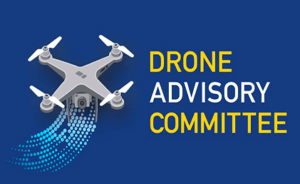The Drone Advisory Committee (DAC) met Friday to move forward with recommendations on critical issues for drone integration into the U.S. airspace. A recording of the full meeting can be found on YouTube or on Facebook.
Elaine Chao, the U.S. Secretary of Transportation, started off the meeting thanking the FAA for their efforts at drone integration, and giving a nod to contactless delivery and drones in the current pandemic. “Drones are making a tremendous impact on aviation,” said Chao. “…The usefulness of drones is more relevant today than ever before.”
As always, Chao emphasized the need for a ‘safety first’ culture, and said that the FAA’s “data driven and performance based approach…. strengthens safety…. and allows the department to be tech neutral.” FAA’s Dan Elwell followed Chao’s remarks with his introduction, saying that the implementation of a Remote ID rule for drones was a top priority for the agency: Elwell said that the agency expects to issue a final rule on Remote ID in December of 2020.
DAC Recommendations for UTM: Some agreement, More Questions
One of the primary agenda items were the final DAC recommendations for unmanned traffic management (UTM), which was taken on by the DAC’s Task Group 7, led by David Silver. UTM is a complex subject matter, and the task force divided their findings into areas that all of the Task Group members agreed upon, and those that required more discussion in order to reach consensus.
Under areas of “full support” the Task Force listed first their agreement on the group’s description of a federated UTM system, rather than a single, government provided solution. Also listed as areas of full support: the benefits of LAANC, a clear need for a UTM system; performance rules for service suppliers and some UTM services; the need for standards development; and the concept of “government-qualified” services and service providers.
The points listed under those still “requiring more discussion” were much more complex, however – a reminder that many of the technologies and concepts in this new framework have yet to be fully developed. Topics included the role of a centrally held information system (the Flight Information Management System, or FIMS), the role and responsibilities of manned aircraft pilots in UTM, Remote ID, data protection, and deconfliction strategies.
Developing a Safety Culture in the Drone Community
The second major agenda item for the meeting was a report from Task Group 8, led by Captain Joe DePete, focused on developing a culture of safety in the community of drone flyers. The Group is at the beginning of their project: but emphasized the need for developing a learning focused environment – and building trust between regulators and pilots at all levels.

Miriam McNabb is the Editor-in-Chief of DRONELIFE and CEO of JobForDrones, a professional drone services marketplace, and a fascinated observer of the emerging drone industry and the regulatory environment for drones. Miriam has penned over 3,000 articles focused on the commercial drone space and is an international speaker and recognized figure in the industry. Miriam has a degree from the University of Chicago and over 20 years of experience in high tech sales and marketing for new technologies.
For drone industry consulting or writing, Email Miriam.
TWITTER:@spaldingbarker
Subscribe to DroneLife here.








[…] The FAA?s Drone Advisory Committee: Here?s What Happened – https://dronelife.com/2020/06/21/the-faas-drone-advisory-committee-heres-what-happened/ […]